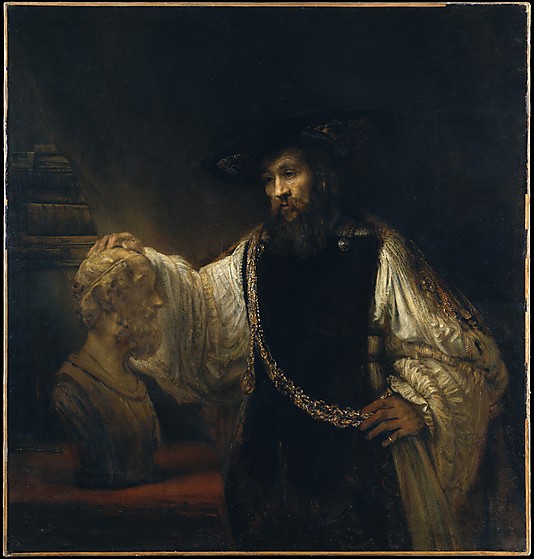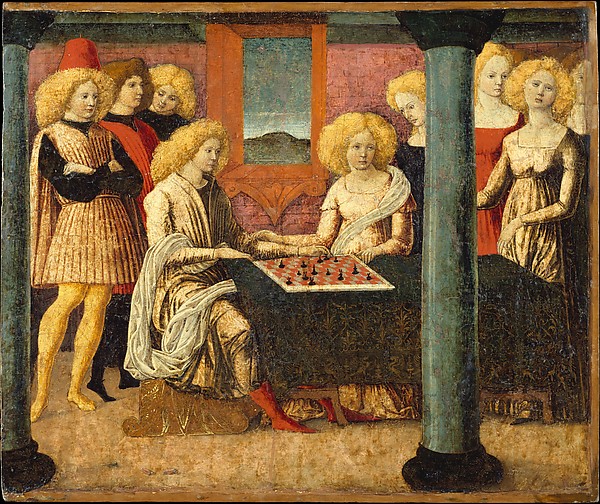The first art work is named the "Chess Players" by Liberale da Verona. This art piece was made in 1457. Liberale da Verona is an Italian artist and this piece is made of tempera on wood. There is a bit of a narrative to this piece as well. There are two short stories that are being told, one is that a maid, positioned near the window, has smitten a young man and the erotically charged game of chess (the lady is about to lose). The emphasis on the blond afros that are being sported is because it was the height of fashion during this time period.In this piece, the technique of shading is used which is recognized as the transition from the Medieval style of art in which the art was very flat.
The next art piece is composed of oil paint on canvas. This piece was made by Dutch artist Rembrandt van Rijn. Titled "Aristotle with a Bust of Homer" was made in 1653. The amplified use of shading, a technique taken from the Renaissance era, and foreshortening are seen in this piece. The medallion represents Alexander the Great, who was tutored by Aristotle. This painting was sold to a collector by the name of Antonio Ruffo. Also, the painting refers to Aristotle's comparisons of using sight and touch as a way of gaining knowledge.


Khary, good essay- your descriptions are detailed and your intro paragraph shows an excellent understanding of these two styles-96
ReplyDelete